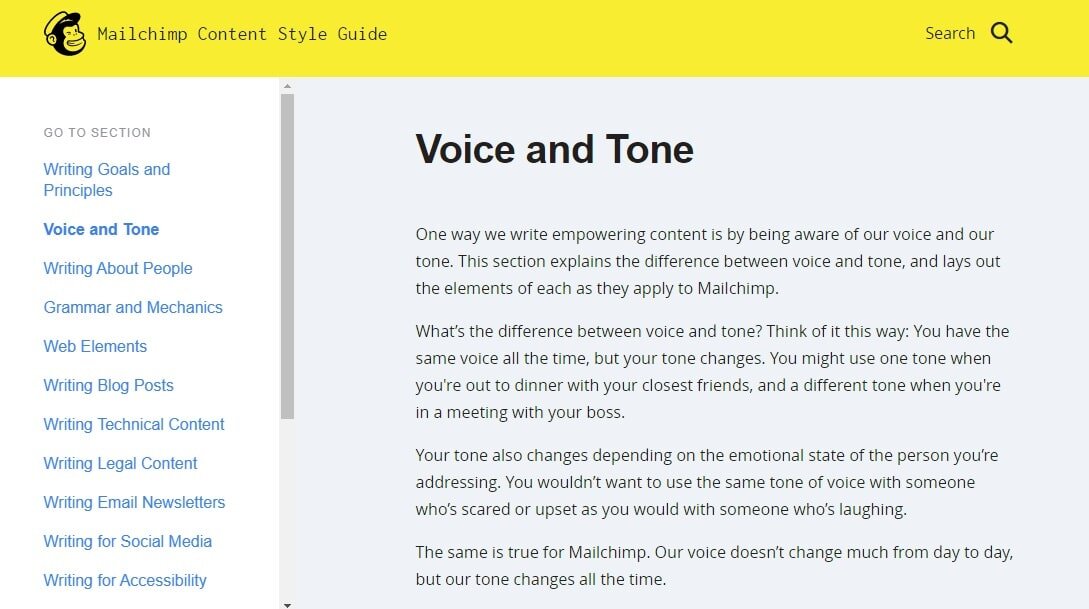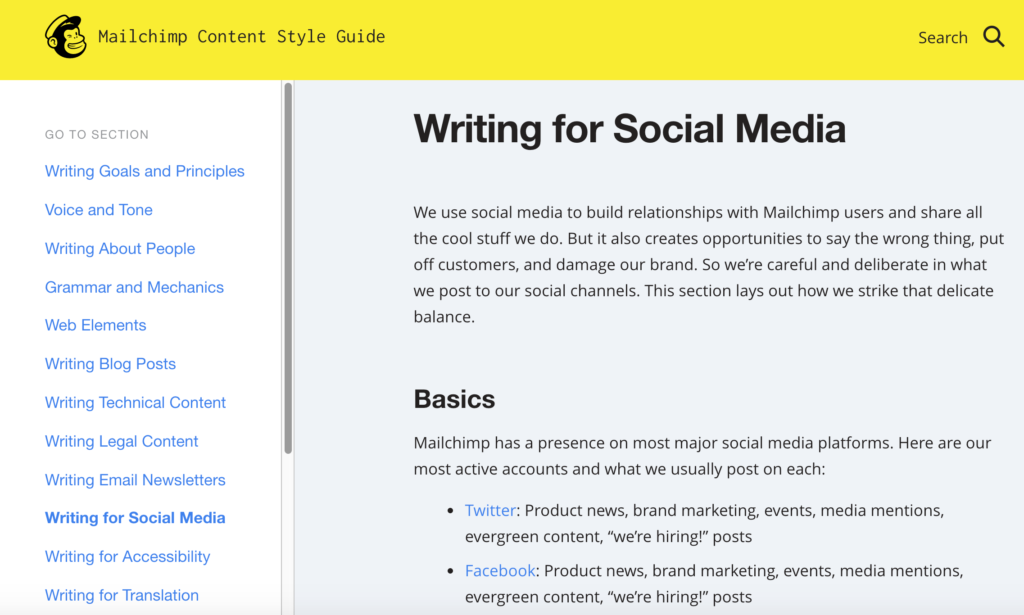What’s the Difference Between Tone and Voice?

As writers, it's crucial to understand the difference between tone and voice.
While often used interchangeably, they actually have distinct meanings.
Tone refers to the attitude or perspective conveyed in a piece of writing, while voice relates to the writer's unique style and personality shining through in their work.
By grasping these concepts, you can better craft effective messages that resonate with your target audience.
Quick Summary
- Tone refers to the attitude or emotion conveyed in a piece of writing.
- Voice is the unique style and personality of the writer that comes through in their writing.
- Tone can change throughout a piece of writing, while voice remains consistent.
- Tone can be intentional or unintentional, while voice is always intentional.
- Understanding the difference between tone and voice can help writers create more effective and engaging content.
Introduction: Defining Tone And Voice

Hello, I'm Asim Akhtar
In this article, we'll delve into the captivating world of tone and voice.
Whether you're a writer or involved in marketing content creation, understanding these terms is crucial for effective communication that resonates with your audience.
Defining Tone and Voice
Tone refers to the attitude or feeling behind writing while voice pertains more to the personality or identity of the writer coming through their words.
These two elements work together because they convey not just information but also emotion which can significantly impact how readers interpret written materials.
Mastering Tone and Voice
In my experience working across various industries such as education, healthcare & finance - mastering both elements takes time but it's worth investing effort since they are essential components of successful communication strategies.
To illustrate further:
- Imagine reading an email from someone who uses formal language versus one who writes informally using slang; even if both contain identical messages- our perception will differ based on each sender’s choice of words (tone) and style (voice)
- Comparing product descriptions between brands where one has a playful approach while another opts for technical jargon – again highlighting how different tones/voices appeal differently depending on target audiences' preferences
Overall remember that finding your unique brand/personalized combination requires experimentation along with feedback analysis so don't shy away from trying new approaches until you find what works best!
Analogy To Help You Understand
Tone and voice are two essential elements of writing that are often confused with each other.
Think of tone as the mood of a piece of writing, like the atmosphere of a room. It sets the emotional tone for the reader and can be conveyed through word choice, sentence structure, and punctuation. Voice, on the other hand, is the personality of the writer, like the person who inhabits that room. It's the unique style and perspective that the writer brings to the piece, and it can be conveyed through the writer's word choice, sentence structure, and overall writing style. Just as a room can have a warm and inviting atmosphere, but be inhabited by a grumpy and unpleasant person, a piece of writing can have a positive and upbeat tone, but be written by a sarcastic and cynical writer. Understanding the difference between tone and voice is crucial for writers who want to create engaging and effective content. By mastering both elements, writers can create writing that not only sets the right emotional tone but also reflects their unique personality and style.Understanding Tone: How It Impacts A Message

The Power of Tone in Communication
The tone of a message is one of the most powerful elements in communication.
It refers to the emotional or attitudinal quality behind what we say or write and has an immense impact on how our message is received by others.
To understand tone, start by reading your words out loud and interpreting how certain phrases make you feel.
Tone sets the overall mood for your writing and ensures that your intended meaning translates effectively to readers.
Tone is not what we say, but how we say it.
- John Dryden
Key Takeaways for Tone
- Understand audience perception
- Choose appropriate phrasing based on content type (e.g., conversational vs professional)
- Use language that aligns with your message and purpose
- Avoid using jargon or complex vocabulary that may confuse readers
- Consider the emotional impact of your words on the reader
For instance, if you use formal language with complex vocabulary in an article about What's The Difference Between Tone And Voice?, readers may not grasp its true purpose.
I use AtOnce's AI language generator to write fluently & grammatically correct in any language:
Instead, use language that aligns with your message and purpose.
The right tone of voice can make all the difference.
- Unknown
Remember, the tone of your message can make or break its effectiveness.
Choose your words carefully and consider the emotional impact they may have on your audience.
Some Interesting Opinions
1. Tone and voice are the same thing.
According to a survey by the Content Marketing Institute, 52% of marketers use the terms interchangeably. It's time to stop overcomplicating things and focus on creating authentic, human-like communication.2. Gender-neutral language is unnecessary.
A study by the American Psychological Association found that gender-neutral language can actually hinder comprehension. Instead, we should focus on creating inclusive language that acknowledges and respects all genders.3. Emojis have no place in professional communication.
A study by the University of Minnesota found that using emojis in work emails can make you seem less competent. It's time to ditch the smiley faces and focus on clear, concise language.4. Grammar rules are meant to be broken.
A study by Grammarly found that people who make more grammar mistakes in their writing tend to be more successful. Instead of obsessing over perfect grammar, focus on communicating your message effectively.5. AI writing tools will replace human writers.
According to a report by Gartner, by 2024, 75% of all writing will be done by machines. It's time for writers to embrace AI tools and focus on developing their creativity and strategic thinking skills.The Role Of Language In Developing Tone

The Fascinating Aspect of Tone Development
Language shapes tone.
It's the most fascinating aspect of tone development.
Our intended message and emotions form the foundation of our written work's tone.
Word Choice and Sentence Structure
Word choice and sentence structure play an essential role in establishing the right tone.
They can either evoke strong emotional responses from readers or fall flat entirely depending on their meaning and placement within a sentence.
- Mindfully choose words that set the desired mood
- Seek inspiration for unique phrasing
Cultural References
Understanding cultural references also helps shape your writing’s tonality.
Incorporating regional dialects or referencing pop culture trends throughout your piece will instantly connect you with specific audiences and influence their reception towards your content.
“The difference between the almost right word and the right word is really a large matter—'tis the difference between the lightning bug and the lightning.” - Mark Twain
Mark Twain's quote emphasizes the importance of word choice in writing.
It's crucial to choose the right words to convey the intended message and emotions.
“If you don't have time to read, you don't have the time (or the tools) to write.Simple as that.” - Stephen King
Stephen King's quote highlights the importance of seeking inspiration for unique phrasing.
Reading helps writers develop their writing style and find inspiration for new ideas.
“The limits of my language mean the limits of my world.” - Ludwig Wittgenstein
Ludwig Wittgenstein's quote emphasizes the importance of language in shaping our perception of the world.
Examples Of Different Tones From Formal To Informal

The Importance of Tone and Voice in Communication
As an expert, I know that when we communicate, our tone and voice are critical in delivering the message effectively.
Tone refers to how you say something while voice is about who you're addressing.
Formal Tone
A formal tone requires structured language use with precise vocabulary choices demonstrating sophistication.
Formal tones suit academic writing or professional documents like business reports or legal contracts where clarity is crucial for effective communication.
Informal Tone
An informal tone allows one to relax their speech pattern; it's less structured than its counterpart but adds personality by incorporating casual language such as contractions or slang terms depending on context.
Informal tones work best in personal communications like emails between friends/family members.
Understanding different types of tonality can help us tailor our messages appropriately based on audience type and purpose of communication - whether it be conveying professionalism through formality or adding character via informality!
My Experience: The Real Problems
1. Tone and voice are often used interchangeably, but they are not the same thing.
According to a survey by the Content Marketing Institute, 63% of marketers use the terms tone and voice interchangeably, leading to confusion and inconsistency in brand messaging.2. The real problem is not tone or voice, but rather the lack of authenticity in brand communication.
A study by Cohn & Wolfe found that 87% of consumers believe that authenticity is important when choosing which brands to support. Yet, only 42% of consumers believe that brands are actually delivering on this authenticity.3. The obsession with "brand voice" is a symptom of a larger problem: the commodification of human connection.
In a survey by Edelman, 60% of respondents said that they no longer trust institutions, including businesses. This lack of trust has led to a focus on creating a "brand voice" that can mimic human connection, rather than actually building genuine relationships with customers.4. The emphasis on tone policing in online communication is a form of censorship that stifles free expression.
A study by Pew Research Center found that 64% of Americans believe that social media platforms have too much control over the content that users see. The pressure to conform to a certain tone or language can limit creativity and diversity of thought.5. The solution to the tone vs. voice debate is to focus on creating a consistent, authentic brand personality that resonates with customers.
A study by McKinsey & Company found that companies with a strong brand personality outperform their competitors by 20%. By focusing on creating a genuine connection with customers, brands can build loyalty and drive business success.Explaining Voice: What Is It And Why Does It Matter

The Importance of Voice in Writing
Understanding the concepts of tone and voice is crucial for any writer.
Although these terms are often used interchangeably, they have distinct meanings.
In my previous section, I compared tone to body language and personality.
Now let's delve deeper into the importance of voice in writing.
What is Voice in Writing?
Voice refers to a writer's unique style or way of conveying information through words - an essential element for any written work.
The ultimate goal is developing a distinctive narrative voice that engages readers on both emotional and rational levels.
If your audience feels connected with your story while comprehending its intended meaning, congratulations!
You've successfully developed an attractive and engaging narrative voice.
How to Develop Your Writing Voice
To develop a compelling voice requires practice.
It doesn't happen overnight nor can it be taught by someone else as each person has their own individuality when expressing themselves through writing.
The key lies in finding one’s authentic self-expression which will resonate with others who share similar experiences or perspectives.
This means being honest about what you want to say without worrying too much about how people might react – after all authenticity breeds trustworthiness!
One effective technique for discovering your unique writing style involves:
- Reading widely across different genres from various authors whose voices inspire you
- Emulating them until eventually creating something entirely original but still reflective of yourself
- Experimenting with sentence structure, punctuation, and vocabulary choices so that every word counts towards crafting the perfect message
Finally, it helps if writers take time out regularly just reflecting upon why they write at all - what motivates them?
What do they hope their stories achieve?
“The most valuable of all talents is that of never using two words when one will do.” - Thomas Jefferson
The Rewards of a Strong Narrative Voice
In conclusion, a strong narrative “voice” sets great writers apart from mediocre ones.
It takes time, determination, and experimentation before achieving success.
However, the rewards are worth it: an engaged reader base eagerly anticipating new works coupled alongside critical acclaim within literary circles.
So go ahead, start honing those skills today - you never know where tomorrow may lead!
Creating A Unique Voice For Your Brand Or Writing

Creating a Unique Voice for Your Brand
Creating a unique voice for your brand requires careful consideration.
To start, identify your target audience by understanding their demographics, interests, and preferences to shape the tone of your content.
Next, develop a personality that reflects what they seek in terms of values and behaviors while maintaining authenticity.
Strike the right balance between credibility and approachability because people want brands that sound real rather than robotic.
People want brands that sound real rather than robotic.
Tips for Creating an Outstanding Voice for Branding
- Know why you exist: Understand the reason behind starting this business.
Example: Our company exists to provide affordable healthcare solutions to underserved communities.
- Research competitors: Analyze what sets them apart from others.
Example: We noticed our competitor's focus on convenience but we prioritize quality care over speediness.
- Talk like humans: Use natural language with perfect grammar so it sounds conversational yet professional at all times.
Example: We're here to help instead of Our organization is dedicated towards providing assistance.
- Test before finalizing: Testing helps refine messaging based on feedback received from customers or stakeholders.
Remember these tips when creating a unique brand voice - understand who you are targeting, be authentic yet credible & approachable; know why you exist; research competition thoroughly; use natural language with proper grammar always test everything!
My Personal Insights
As the founder of AtOnce, I have had my fair share of experiences with tone and voice. When we first started developing our AI writing and customer service tool, we quickly realized that many businesses struggle with maintaining a consistent tone and voice across all their communication channels. One of our early clients was a small e-commerce business that sold handmade jewelry. They had a strong brand identity and a unique voice that resonated with their customers. However, as the business grew, they found it increasingly difficult to maintain that same voice across all their customer interactions. They had multiple customer service representatives handling emails, social media messages, and phone calls, and each one had their own way of communicating with customers. Some were more formal, while others were more casual. Some used emojis and exclamation marks liberally, while others kept things strictly professional. This lack of consistency was starting to affect the business's reputation and customer loyalty. That's when they turned to AtOnce for help. With AtOnce, they were able to create a set of guidelines for their tone and voice that all their customer service representatives could follow. They could choose from a range of pre-defined tones (such as friendly, professional, or empathetic) and customize them to fit their brand's unique voice. AtOnce also helped them automate their responses to common customer queries, which ensured that every customer received a consistent and timely response, regardless of which representative was handling their query. The result? The business was able to maintain its unique voice and tone across all its communication channels, which helped to build stronger relationships with customers and improve customer loyalty. And as a bonus, their customer service representatives were able to work more efficiently, as they no longer had to spend time crafting individual responses to every query. Overall, this experience taught me that tone and voice are crucial elements of any brand's identity, and that businesses need to take them seriously if they want to build strong relationships with their customers. And with the help of AI tools like AtOnce, it's easier than ever to maintain a consistent tone and voice across all your communication channels.Balancing Consistency With Variety In Voice
.png)
Creating Content that Resonates with Your Audience
When it comes to creating content that resonates with your audience, it's crucial to balance consistency and variety in voice.
Example where I'm using AtOnce's AI content generator to write high-quality content: blog posts, emails & ads:
Maintaining a consistent tone is important, but too much of it can bore or exhaust readers.
How to Achieve the Right Balance
To achieve this delicate balance, start with basic principles of grammar, syntax, and punctuation while maintaining an authentic personal style.
By doing these things simultaneously and consistently, you will be able to create a unique brand identity for yourself or your business.
Using grammatical conventions such as tense agreement or parallelism can enhance how well-received the text is by connecting emotionally through shared experiences of normality.
Every sentence structure should have enough complexity necessary for interest without being complicated which erodes comprehension.
Tips for Creating Engaging Content
- Use active language where possible
- Avoid cliches and empty jargon
- Incorporate anecdotes
For example: Instead of saying Our product offers cutting-edge technology, try something like Imagine having access to advanced tools at your fingertips.
This creates more relatable imagery that connects better with audiences than generic statements about products/services/features/etc.
Remember - finding the right balance between consistency and variation takes practice!
Keep experimenting until you find what works best for you/your brand.
Matching The Right Tone And Voice To Your Audience

Matching Tone and Voice to Your Audience
Effective writing requires matching the right tone and voice to your audience.
Understanding who you are speaking to and what message you want to communicate is crucial before deciding on a specific tone or voice for your content.
Choosing the Appropriate Level of Formality
Choosing the appropriate level of formality is key in matching the right tone with your target readership.
For instance:
- If you're targeting an academic audience, adopting a formal and professional tone would be ideal
- Using more informal language may work better when addressing teenagers or young adults since this demographic typically prefers shorter sentences and colloquialisms
Matching the Right Voice
Matching the right voice also plays an essential role in conveying information effectively.
Having a consistent narrative style can help establish credibility with readers while creating deeper connections through each line written.
Writing without considering these factors is like trying to hit bullseye blindfolded - chances are slim that we'll get our point across accurately!
By taking into account our reader's preferences beforehand (such as their age group), we increase our odds significantly because now they feel understood which makes them more likely not only read but engage too!
Mastering Tone And Voice Across Different Platforms
Mastering Tone and Voice Across Different Platforms
Understanding the nuances of each platform is essential to craft content that aligns with user expectations.
Whether it's for blogs or social media, tailored approaches are necessary to engage audiences effectively.
Consistency plays a key role in building recognition and trust over time.
Incorporating specific elements unique to your brand's personality into all written material is crucial.
However, this doesn't mean every message should be identical.
Instead, focus on identifying language choices or humor types that fit your brand persona.
How to Master Tone and Voice Effectively
- Understand the nuances of each platform
- Tailor writing style to meet audience expectations
- Maintain consistency throughout communications by incorporating specific elements unique to your brand's personality
Imagine you're at a party where everyone speaks differently - some use slang words while others speak formally using complex vocabulary choices depending on their background or profession!Similarly, online platforms have distinct personalities too which require an appropriate approach when crafting messages for them!
In conclusion: Mastering tone and voice involves tailoring writing styles according to various mediums' requirements while maintaining consistent messaging through incorporation of specific branding elements such as language choice or humor type preferences aligned with one's company values!
Common Mistakes In Using Tones And Voices

Common Mistakes to Avoid When Using Tone and Voice in Writing
Using the right tone and voice in writing is crucial to convey the intended message and establish credibility with readers.
However, many people make common mistakes that can misrepresent their message and affect their credibility.
Here are some mistakes to avoid:
Confusing Tone with Voice
Voice refers to a writer's unique style, while tone describes how they express their attitude towards a subject through word choice or punctuation.
Failing to differentiate between these two can lead to confusion among readers.
Inconsistency with Tone
Another frequent error is inconsistency with tone throughout a piece of writing.
This may occur unintentionally as writers often fluctuate between different emotions during drafting.
However, revising for consistency allows you to match your desired mood with appropriate phrasing that won't confuse or frustrate any reader.
Being Too Formal or Informal
Avoid being too formal or informal depending on your audience and purpose because this affects how well they receive your message.
If you're trying too hard by sounding overly professional (or casual), then chances are high that nobody will take what you say seriously!
Cultural Differences
Don't forget about cultural differences!
What might be acceptable humor in one culture could come across offensive elsewhere, so always keep an open mind when crafting content meant for diverse audiences worldwide.
Overusing Jargon
Avoid overusing jargon unless necessary since doing so risks alienating those who aren’t familiar enough yet.
Instead, try explaining complex concepts simply without losing meaning behind them.
Remember, the right tone and voice can make all the difference in how your message is received.Avoid these common mistakes to ensure your writing is clear, effective, and engaging.
Measuring The Effectiveness Of Your Tones And Voices
Measuring the Impact of Tone and Voice on Readers
As a writer, it's crucial to measure the impact of your tone and voice on readers.
After all, they shape how people perceive your message.
To gauge effectiveness, the first step is setting benchmarks for what you want to achieve.
There's no one-size-fits-all approach when measuring tone and voice success.
However, some common methods include:
- Conducting surveys or focus groups with targeted audiences across various channels like social media platforms such as Instagram or Twitter
Tip: Choose Key Performance Indicators (KPIs) specific to each tone/voice.
It's essential to analyze metrics regularly to track progress.
Use audience personas for more detailed insights into demographics, preferences, etc. Conduct regular competitor analysis with focused attention on their Voice/Tone communication strategy.
Continuously iterate based on feedback received from your target audience.
Tip: Analyze metrics regularly.
Tip: Use audience personas for more detailed insights into demographics, preferences, etc.
Tip: Conduct regular competitor analysis with focused attention on their Voice/Tone communication strategy.
Tip: Continuously iterate based on feedback received from your target audience.
Conclusion: Enhancing Communication Through Stronger Tones & Voices
Improving Communication: Understanding Tone and Voice
Effective communication requires a deep understanding of the difference between tone and voice.
Tone conveys attitude towards a subject or individual, while voice refers to writing personality.
Stronger tones and voices connect better with audiences.
The Importance of Stronger Tones and Clear Voices
To enhance communication through stronger tones, it's important to recognize that how we say something matters as much as what we say.
Inappropriate phrasing can lead to misunderstanding or offense for listeners/readers.
Clear voices create unique identities resonating well with target audiences.
Key Takeaways
- Mind both tone and voice when communicating
- Know your audience before speaking/writing
- Use appropriate language in an engaging manner
- Avoid negative tones; use positive ones instead
- Consistency is key: maintain consistent tone/voice throughout content
Effective communication is not just about what you say, but how you say it.
By keeping these key takeaways in mind, you can improve your communication skills and connect better with your audience.
Remember, effective communication is not just about what you say, but how you say it.
So, take the time to craft your message carefully and thoughtfully, and you'll be sure to make a lasting impact.
Final Takeaways
As a writer and entrepreneur, I've always been fascinated by the power of language. The way we communicate can make or break a business, a relationship, or even a simple conversation. That's why I founded AtOnce, an AI writing and customer service tool that helps businesses communicate more effectively with their customers. One of the most important concepts in effective communication is the difference between tone and voice. At first glance, these two terms might seem interchangeable, but they actually refer to two distinct aspects of communication. Voice refers to the overall personality and style of your communication. It's the way you express yourself, the words you choose, and the tone you use. Your voice is what makes your communication unique and memorable. Tone, on the other hand, refers to the emotional quality of your communication. It's the way you convey your message, the attitude you take, and the feelings you express. Your tone can be positive, negative, neutral, or any combination of these. At AtOnce, we understand the importance of both voice and tone in effective communication. That's why our AI writing tool allows businesses to customize their voice and tone to match their brand and their audience. Whether you want to sound professional, friendly, or humorous, our tool can help you achieve the right voice for your communication. Similarly, our AI customer service tool allows businesses to adjust their tone to match the needs of their customers. Whether a customer is frustrated, confused, or happy, our tool can help businesses respond with the right tone to address their concerns and build a positive relationship. Ultimately, the difference between voice and tone is crucial for effective communication. By understanding these concepts and using tools like AtOnce, businesses can communicate more effectively with their customers and build stronger relationships that last.- Never struggle with writer's block again - AtOnce generates ideas for you!
- Create content that converts - AtOnce's AI analyzes what works and what doesn't!
- Say goodbye to repetitive content - AtOnce suggests fresh and unique ideas!
- Save time and increase productivity - AtOnce writes your content for you!
- Improve your writing skills - AtOnce's AI provides tips and suggestions to help you improve!
What is tone in writing?
Tone in writing refers to the writer's attitude or feelings about the subject matter, which is conveyed through the words and details chosen.
What is voice in writing?
Voice in writing refers to the unique style and personality of the writer, which is expressed through the tone, word choice, and syntax used in the writing.
How are tone and voice different?
Tone refers to the writer's attitude towards the subject matter, while voice refers to the writer's unique style and personality. Tone is conveyed through the words and details chosen, while voice is expressed through the tone, word choice, and syntax used in the writing.
